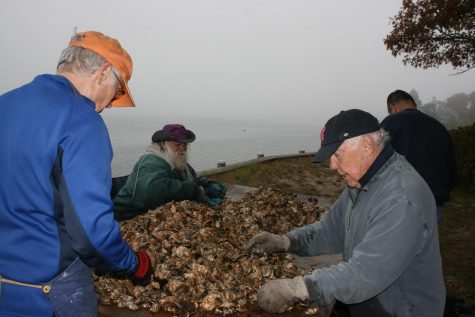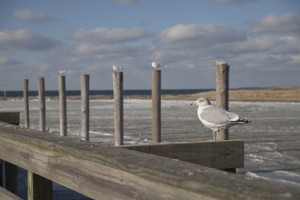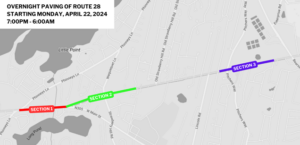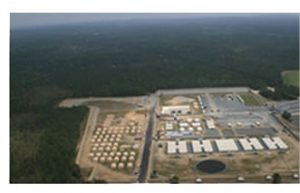 OSTERVILLE – Volunteers from the Barnstable Association for Recreational Shellfishing (BARS) helped Three Bays Preservation Inc. sort living oysters last week from dead ones on a pebble-strewn shore of North Bay.
OSTERVILLE – Volunteers from the Barnstable Association for Recreational Shellfishing (BARS) helped Three Bays Preservation Inc. sort living oysters last week from dead ones on a pebble-strewn shore of North Bay.
This past spring, Three Bays Preservation Inc. had placed 200,000 oyster seeds in 400 plastic floating bags in nearby Middle Cove in North Bay.
The worst-ever algae bloom of Rust Tide in early August, caused by a common saltwater organism called a dinoflagellate (Cochlodinium polykrikoides) that turns salt water a murky red, depleted oxygen from the water column where oysters were incubating in the suspended bags and killed tens of thousands of them.
The intent of growing those oysters is to mitigate and reduce critically high levels of nitrogen throughout North, West and Cotuit Bays since a single adult oyster can filter 50 gallons of water a day.
Every day, nitrogen equal to sixty-six 50-pound bags of fertilizer flows into the Three Bays Estuary.
Excess nitrogen leaching from septic systems, road runoff from lawn fertilizers, detergents from washing your car and doing laundry, as well as other metals and hydrocarbons pour into an overwhelmed marine environment.
This means the nitrogen levels throughout the 1,251-acre estuary exceed critical limits established by the Massachusetts Estuaries Project.
But if enough oysters can be planted in the years ahead, it’s hoped that eventually up to 20% of nitrogen can be filtered out just by oysters.
Since the algae bloom, however, it’s fallen to Three Bays and volunteers from BARS and students from Cape Cod Academy to hand-sort the living from the dead.
This work has been going on for weeks, one pair of hands at a time.
Bags are opened and gently dumped onto a makeshift plywood table that sits near the shore of North Bay, and the sorting begins.
Volunteers help Three Bays staff sort and toss oysters into one of two stacks of large plastic crates: orange for dead oysters the size of a quarter, and blue for living oysters the dimension of a child’s fist.
“The surviving oysters are healthy and we’re very optimistic about their chances,” explained Lindsey B. Counsell, executive director of Three Bays Preservation Inc.
“Just a few days ago after we finished sorting the dead from alive ones, and with the help of the Town of Barnstable’s Natural Resources Division, we had distributed thousands of surviving oysters into the shallow waters of West Bay and North Bay,” he said, adding, “Three Bays is very grateful for the hands-on help to cull the thousands of oysters.”
We’re here “just for the volunteering,” explained Fred Dempsey of BARS, whose organization assists with “farming and fishing” initiatives for good causes.
























